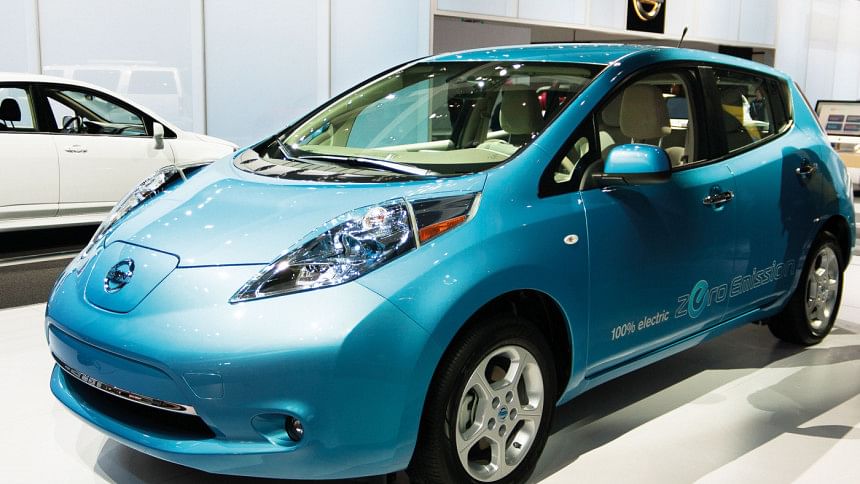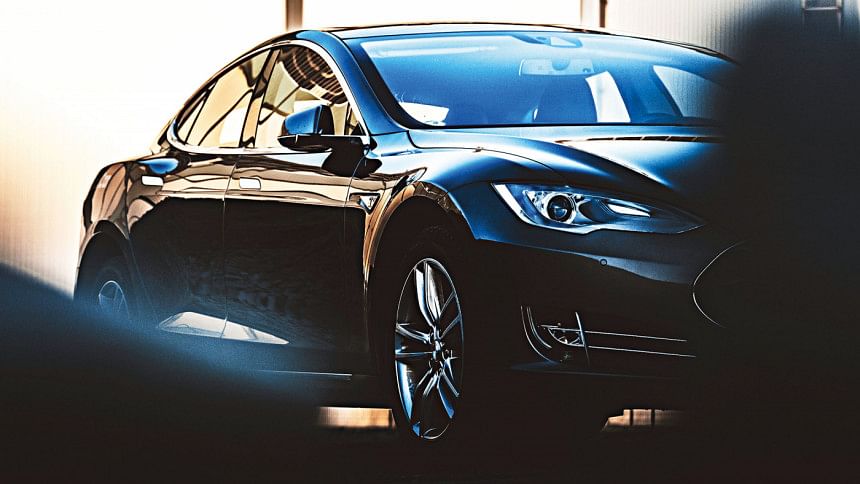Electric dreams to reality: The EV evolution since the 1880s

The internal combustion engine reigns supreme on our roads today, but its dominance wasn't always guaranteed. In the 19th century, another contender emerged: the electric car. Often relegated to the footnotes of automotive history, the electric car boasts a surprisingly long and fascinating journey.
Unlike popular belief, the story of electric vehicles (EVs) is not a narrative of the 21st century, but a saga that began in the 19th century. Understanding the evolution of electric cars, from their early origins to the present day, provides valuable context as we stand on the cusp of a potential transportation revolution in 2024.
The dawn of electric mobility
In the mid-1800s, the concept of electric mobility took its first steps with inventors across Europe and the United States experimenting with battery-powered vehicles. Notably, in 1835, British inventor Robert Anderson developed an electric carriage, although primitive, paving the way for future advancements. By the late 19th century, electric vehicles had begun to gain popularity, offering a cleaner, quieter alternative to their steam and gasoline counterparts.

Germany wasn't far behind either. In 1888, Andreas Flocken's Flocken Elektrowagen emerged, considered by some to be the first "real" electric car. These early electric vehicles had several advantages. They were quiet, smooth-riding, and didn't require the messy process of hand-cranking an engine to start.
The US also played a significant role in the early electric car scene. Around 1890, William Morrison, an American chemist, introduced the first successful electric car in the United States. This six-passenger vehicle sparked interest in electric cars, particularly among urban residents who valued their quiet operation and ease of use. By 1900, electric cars held a surprisingly strong presence, accounting for roughly a third of all vehicles on the road.
The rise and fall
Several factors contributed to the initial popularity of electric cars around 1900. Firstly, the horse was still the dominant mode of transportation, and electric cars offered a cleaner and more convenient alternative. Secondly, the limitations of competing technologies like steam-powered cars, with their long startup times, made electric cars a more attractive option. Thanks to these factors, the turn of the century witnessed electric vehicles enjoying widespread acclaim, with cities like New York adopting electric taxis.
However, the invention of the gasoline-powered car with the electric starter in 1912 presented a significant challenge. Gasoline cars offered greater range and lower running costs compared to electric vehicles. The mass production of affordable gasoline cars like the Ford Model T made electric cars less attractive.
Additionally, the discovery of vast oil reserves in the US made gasoline readily available and affordable, especially in rural areas where electricity access was limited. These factors led to the decline of electric cars by the 1930s.
For the next few decades, electric vehicle technology stagnated. Cheap and abundant gasoline, coupled with advancements in the internal combustion engine, left little incentive for alternative fuel sources.

Resurgence in the 20th century
The tide began to turn again in the late 1960s and early 1970s. Soaring oil prices and gasoline shortages, highlighted by the 1973 Arab Oil Embargo, spurred renewed interest in alternative fuel vehicles. This led to government initiatives and research into electric car technology.
Innovations such as the development of the lithium-ion battery by M. Stanley Whittingham added to the momentum, although the technology and infrastructure at the time were not conducive to mass adoption. These early electric vehicles still suffered from limited range and performance compared to gasoline cars.
The electric revolution in the 21st century
The 1990s saw stricter environmental regulations, including the Clean Air Act Amendment and the Energy Policy Act, prompting a renewed focus on electric vehicles. Automakers began developing electric versions of popular models, offering improved performance and range. Notably, Toyota introduced the Prius, the world's first mass-produced hybrid electric vehicle, in 1997. The Prius, with its combination of electric and gasoline power, proved commercially successful and helped raise the profile of electric vehicles.
The late 20th and early 21st centuries marked a significant turning point for electric vehicles. The advent of the internet and modern technology, along with heightened awareness of climate change, propelled EVs into the mainstream. Toyota's release of the Prius, followed by the advent of luxury electric cars by Tesla showcased electric cars' potential as both a necessity and a desire.
Firstly, Tesla Motors' announcement of the roadster in 2006 sent shockwaves through the automotive industry. Their ambitious vision of a luxury electric sports car with a range exceeding 200 miles on a single charge captured the public's imagination. This announcement challenged the perception of electric vehicles as short-range, utilitarian machines. Tesla's focus on performance and luxury demonstrated the potential for electric cars to be just as exciting and desirable as their gasoline-powered counterparts.
Secondly, the introduction of the Chevy Volt and Nissan LEAF in 2010 provided consumers with more practical options. The Volt, a plug-in hybrid, offered a compelling solution for those with range anxiety. It combined an electric motor with a gasoline engine, allowing drivers to utilise electric power for most everyday commutes while having the security of a gasoline engine for longer trips. The LEAF, an all-electric vehicle, offered a more environmentally friendly choice for those with access to charging infrastructure. These two vehicles, catering to different needs, broadened the electric car market beyond early adopters and enthusiasts.
These developments, however, were not solely responsible for the resurgence of electric cars. Government support played a crucial role in fostering innovation and consumer confidence. Investments in charging infrastructure addressed a major concern for potential buyers: "where will I charge my car?".
Additionally, government funding for battery research led to significant advancements. Battery packs became more efficient, offering greater range and shorter charging times. These advancements, in turn, helped to reduce the cost of electric vehicles, making them a more attractive proposition for mainstream consumers.
The future is electric
Perhaps the most telling sign of the EV boom is the growing consumer adoption and the corresponding development of charging infrastructure. Vehicles like the Nissan Leaf and the Chevrolet Bolt have brought electric driving within reach of the average consumer, offering reliable performance at competitive price points. Furthermore, the expansion of charging networks, led by initiatives like Tesla's Supercharger, is alleviating range anxiety and making electric vehicles a practical option for an increasing number of drivers.
Despite the significant progress, the road ahead for EVs is not without its challenges. The industry faces issues related to battery production, raw materials, and the environmental impact of mining activities. Additionally, the infrastructure for charging needs to keep pace with the growing number of EVs on the road. Furthermore, as the sector becomes increasingly crowded, companies will need to innovate continuously to stand out in a competitive market.

 For all latest news, follow The Daily Star's Google News channel.
For all latest news, follow The Daily Star's Google News channel. 



Comments